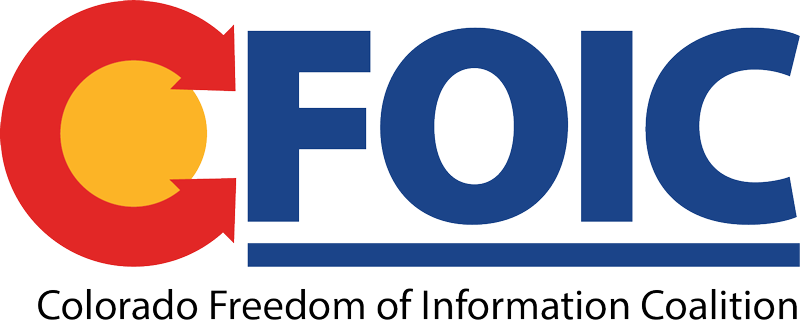By Steve Zansberg
CFOIC President
Colorado has had its share of high-profile criminal cases.
The aborted rape prosecution of NBA star Kobe Bryant. The capital trial of Aurora movie theater shooter James Holmes. The preliminary hearing for the kidnapper and killer of 10-year-old Jessica Ridgeway. The pending prosecution of the admitted Planned Parenthood shooter, Robert Lewis Dear.
In each case, a judge entered an order severely restricting the public’s right to inspect records kept in court files, largely out of concern that seating an impartial jury would be more difficult if the records were widely disseminated.

Steve Zansberg
Ironically, these sealing orders came in response to the intense and justified public interest in how the alleged crimes would be handled by our criminal justice system. The news media, acting as the public’s surrogate, successfully challenged each order.
But when such disputes have arisen, the parties have argued not just about the closing of records, but about the appropriate legal standard to decide the question. Each time, a judge has had to make that determination.
We think Colorado should set a uniform standard for the sealing of court files in criminal cases. The Colorado Freedom of Information Coalition recently made a formal request for such a rule to a Colorado Supreme Court committee responsible for proposing Rules of Criminal Procedure applicable in state courts.
To explain why the CFOIC proposed the rule, it is necessary to set the stage.
Americans generally understand that government institutions are public institutions and that government records are our records. To properly hold public servants accountable, we must have access to records showing how they perform their official duties.
You might presume that such rights are guaranteed to citizens by the federal and state constitutions. But to date, the U.S. Supreme Court has only recognized a constitutionally-based right of public access to certain information – actually only certain proceedings – of the judicial branch of government.
It wasn’t until 1980 that the Supreme Court held that the First Amendment guarantees the public a qualified presumptive right to attend criminal trials in the nation’s courts. Subsequent court decisions extended that right of public access to other pre-trial proceedings, including preliminary hearings, in criminal cases.
The Supreme Court hasn’t rejected a First Amendment-based right of public access to the proceedings or records of the other two branches of government – the legislative and the executive. It simply hasn’t been called upon to resolve that issue yet.
Nor has the Supreme Court, since first recognizing that First Amendment right of public access to criminal court proceedings, chosen to determine whether that same right applies to the records on file in criminal court cases (although numerous lower courts have held that the First Amendment right of public access does apply to judicial records.)
If seating an impartial jury may be made more difficult by releasing information in a court file, does that concern alone justify withholding information from the public? Criminal defense attorneys routinely make that argument, urging judges to engage in a simple “balancing of competing interests” analysis – nothing more.
But when a criminal defendant’s Sixth Amendment right to a fair trial is balanced against the public’s right to attend court proceedings, the First Amendment demands a much higher burden on any party wishing to overcome the public’s right. The requested closure must be shown to be (1) necessary to prevent a “substantial probability” of harm to an interest “of the highest order”; (2) actually effective in preventing such harm; and (3) no broader than necessary to prevent such harm. Additionally, it must be shown that no reasonable “alternative means” exist to adequately protect the defendant’s right to a fair trial.
Among such “alternative means” the court must consider and find ineffective are a change of venue, extensive voir dire, continuance of the trial, empaneling a jury from another jurisdiction, and admonitions to potential jurors to avoid all press coverage. Indeed, this is the very standard the Colorado Supreme Court ordered the trial judge to apply prior to closing the preliminary hearing of Jessica Ridgeway’s killer in 2012.
But should judicial records be treated differently than judicial proceedings? The American Bar Association, surveying the law applied by state and federal courts across the country, has answered that question “no.”
In 1968, an ABA committee promulgated a set of Criminal Justice Standards for Fair Trial and Free Press that applied the same standards set forth above for the closure of criminal case proceedings to “judicial records” on file in criminal cases.
The Colorado Supreme Court expressly applied this ABA standard in resolving a case involving the closure of a preliminary hearing in 1979 (a year before the U.S. Supreme Court first recognized the First Amendment right of access to criminal trials).
The real foundation for the CFOIC’s proposed rule is that the same First Amendment right of public access to judicial proceedings applies to judicial records on file in courts of law. The Colorado Supreme Court made such a finding way back in 1966!
Imagine this scenario: Suppose the General Assembly passed a law declaring that only the parties to a case (plaintiff and defendant in a civil case; the People and the accused in a criminal case) may access the records in a court file. Would such a statute violate the public’s right of access under the First Amendment? After all, no state statute can violate the First Amendment.
This isn’t a hypothetical set of facts. In 1966, the Longmont Times-Call challenged the constitutionality of a state statute (still on the books) that quite expressly restricts access to all pleadings on file in court of law only to the parties to the case.
In finding that the statute, despite its plain text, did not bar the clerk of the court from providing copies of the filed pleadings to the newspaper (in an election contest dispute), the Colorado Supreme Court held that to construe the statute as it was written “would raise serious questions of constitutional law involving freedom of the press.” Obviously, the “freedom of press” clause to which the Court referred is found in the First Amendment.
We contend the Colorado Supreme Court resolved this issue 50 years ago: The First Amendment protects the public’s right to inspect records that are on file in courts of law, at least in cases “of public interest,” as the Court put it in 1966 (and again in 1999). It is firmly established that the public has a legitimate interest in all criminal cases prosecuted in courts of law.
All parties involved in such cases, as well as trial court judges, would benefit from having the Colorado Supreme Court promulgate a clear rule of procedure setting the standard by which criminal court files can be suppressed.
No doubt the various interested parties and individual judges still will disagree about the application of this standard to particular facts and circumstances. But the justice system stands to gain if, at the outset, everyone understands the rule of law that guides the outcome.
Steve Zansberg, president of the Colorado Freedom of Information Coalition, is a partner in the law firm Levine Sullivan Koch & Schulz, LLP.
Follow the Colorado Freedom of Information Coalition on Twitter @CoFOIC. Like CFOIC’s Facebook page. Do you appreciate the information and resources provided by CFOIC? Please consider making a tax-deductible donation.




